
Meta+Verse
COLLECTIVE MAIL ART POETRY BY RUGGERO MAGGI AND HANS BRAUMÜLLER, 2021
Table of contents of Meta+Verse
The encounter of Hans Braumüller and Ruggero Maggi
Along the eternal path of art, beyond the works created, there remain trails of friendship that emerge from encounters of souls in the search for the noblest ideals of achieving a more just society and happier people. Especially, in mail art whose principles promote multiculturalism, interrelationships between generations, gender, ethnicity and social classes, where there is no censorship or own benefits. Meta+Verse relates an open proposal of artists who, without knowing each other personally, through fruitful exchanges have originated this relationship.
The beginning
When Hans Braumüller was studying Fine Arts at the University of Chile in Santiago, he began with mail art thanks to an invitation from the Chilean artist Gregorio Berchenko, living in Paris, to participate in the UNI/vers(;) portfolio of visual poetry by the Chilean Guillermo Deisler, residing in Halle, East Germany. When the UNI/vers(;) No. 1 arrived by mail, he discovered the world of mail art and visual poetry, without knowing the rich and creative history of all that movement that he felt was something very inspiring and participatory. Those were troubled times under the dictatorship of Augusto Pinochet in Chile, 1988.
UNI / vers (;)
In that portfolio UNI/vers(;) No. 1 he came across a work by Ruggero Maggi from Italy. At this time a continued correspondence and dialogues between the two artists began. Then Braumüller invited him to participate in a magazine called La Preciosa Nativa that he edited with some friends in Santiago de Chile. It was a countercultural magazine that brought together many art students of the University of Chile.
They tried to generate their own art and learn from each other to create an artist movement that was capable of doing something different in Chile, especially in Santiago.
La Preciosa Nativa
The magazine La Preciosa Nativa was published until 1992, reaching a total of 10 issues. With the correspondence that came from Ruggero Maggi, he realized that they were on a similar path, although Maggi was from another generation and Braumüller had just entered mail art. Maggi had a strong concern, for example, for the Brazilian Amazon. In turn, Hans Braumüller was very inspired by the indigenous world on the American continent that was subdued by our Western civilization. Maggi´s participation in La Preciosa Nativa No. 8 and No. 9 consisted of an imagery of Indigenous Peru in stamp forms, called Artiststamp in mail art. During the collective creation of the magazine La Preciosa Nativa, Braumüller learned that this collaborative way of contributing to art was what gave him more responses and energy to move forward. That operating in cooperation, dialogues with other proposals, has been for him until today the key to unfolding his unique art.


Collaboration
He then experienced in mail art that same force of cooperation and dialogue to generate something together without competing with the other to be more successful. When he was starting to make a life as an artist, he realized that most of them were very selfish and self-centered, each one believed that he was the best.
The craziest thing about this culture was that art was not discussed and valued but rather the monetary value of the artworks, the Who is who in galleries and institutions, in an environment corrupted by the dictatorship, which needed to decorate with beauty the status quo.
Together to Utopia
When they were producing the magazine La Preciosa Nativa they tried to overcome that selfishness to be together against that dictatorship, that threat to life, which finally also united them and told them that as individualists they would not reach any end to any better society. This doing, conceiving a utopia together, was then found in mail art and in the visual poetry that was distributed by post, almost in the manner of a global underground of artists united by the postal network.
Origen Project
Taking Deisler‘s idea of assembling a magazine like UNI/vers(;) and with his cooperation, Braumüller made a call to participate in “Origen Project: 500 years of Genocide and Colonialism”. He published two editions of the portfolio, one in 1991 and the second in 1992, to contribute to the campaigns that were arising throughout the Americas under the slogan 500 Years of Resistance, uniting indigenous peoples with progressive sectors of the corresponding countries.
A project that was also closely aligned with the ideas of the La Preciosa Nativa group, which tried to create an art in Chile based on the ancestral identity of native cultures. Number 2 is now in the collections at MoMa library, New York, and MIDECIANT, The International Museum of Electrography, Cuenca, Spain, among other public and private collections world wide.

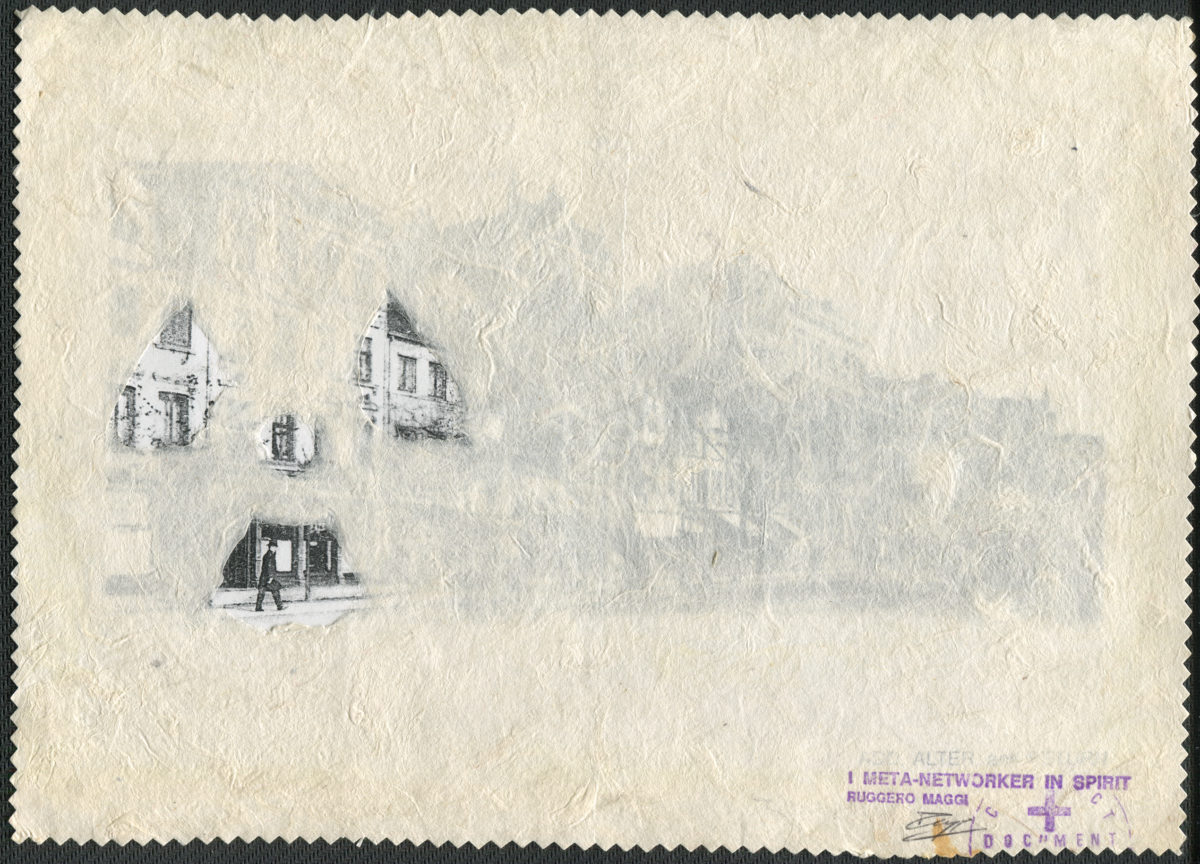



Hamburg
After Origen Project, Braumüller arrived in Hamburg in 1992, later meeting another mail artist from Hamburg, Klaus Rupp, pseudonym Merlin. In 1997 and 1998 they did two mail art projects in Hamburg: Reeperbahn Mail Art Show and Port of Mail Art. These exhibitions were installed in a large local art event ELB‘ART for 24 permanent hours in the old tunnel under the Elbe river. More than 10,000 people each time got to know the postal art of hundreds of participants. Obviously, Ruggero Maggi also participated.
Help Me To Paint
Braumüller wanted to unite his two passions, painting and mail art, thus carrying out for many years the Help me to Paint project which consisted of sending fragments of his paintings to other artists so that they could intervene them and send him back. He managed to gather 170 artists. In 1996 he prepared the received fragments of paintings, drawings and postal art, making collages and putting them together for an exhibition at the La Posada del Corregidor gallery, Santiago de Chile.
Maggi participated in this project with a work of an indigenous Peruvian iconography showing a bird. On the fragment of Braumüller‘s painting that was a mountain range, land and sky of an intense blue, he pasted a stamp with the image of the bird and his phrase
“Mail Art uses institutions in the places of institutions against institutions”.
Ruggero Maggi, Milan, 1995
Another participation of Maggi in Help me to Paint was the intervention on a fragment of a drawing in black Chinese ink where he put a map on it.
The art is the project
Maggi did projects permanently, on a large scale, his art is the project, not only in mail art, but also as a curator of contemporary art in Milan. For Braumüller part of his art is cooperation. Maggi is characterized by being very reciprocal in his communication. In such manner, they have always remained in contact. In that exchange, Braumüller sent him a painting on a polygon with 12 equal sides with a cross pasted on it, for his Amazonas archive.
A Tribute to Guillermo Deisler
After the death of Guillermo Deisler, Braumüller published 1996 the last edition of the assemblage magazine UNI/vers(;) titled as “Number Zero”, with a contribution from Ruggero Maggi, as an homage to this great Chilean artist.
Crosses of the Earth
For his Crosses of the Earth project, Maggi sent some crosses. Braumüller developed one of the first mail art websites dedicated to social justice, Crosses of the Earth, at earth.crosses.net. The site refers to a contemporary art installation with 342 participants, which was exhibited between January 17-26, 2000 at the Museum of Contemporary Art in Santiago de Chile. On the site there is a video of the installation and the ritual performance carried out by a Mapuche group guided by a machi (shaman), spiritual leader and healer of the Mapuche people. Braumüller declares:
“Crosses of the Earth is dedicated to all the indigenous peoples of our Mother Earth of the past, present and future”.
Hans Braumüller, Santiago de Chile, 2000
Identity and Globalization
2001 Maggi sent his participation to the project Identity and Globalization – [E]Mail Art of the mail artist group AUMA (Accion Urgente – Mail Art), in which Braumüller was member since 1998, being from this time forward online at identidad-globalizacion.crosses.net and still open for participation. It was shown in DIGITAL HALL of VII International Biennal of Painting, Cuenca, Ecuador, 2001.
BSE
After Identity and Globalization he developed What is BSE? Most of this project was shown in a Braumüller solo exhibition MAIL ART NETWORKING from December 2002 to March 2003 in Ulla and Heinz Lohmann Showroom C15, Hamburg, Germany.
Operation Mankind
The next project, Operation Mankind from 2005, was exhibited in a public hospital in Hamburg. Braumüller sent some of the closest correspondent artists a black & white copy art in a DIN A2 format to intervene with Add, Alter and Return. After this he opened an ongoing e-mail art project at corn.crosses.net, regarding the overexploitation and misuse of nature resources for particular interests of big economy. As usual, Maggi participated in both projects.
Tibet
In all those years of exchange, Braumüller sent Maggi mail art several times for his projects, among others for Mille Saluti da Casalmaggiore, 2015 and Terra | Materiaprima, 2016. Maggi‘s project Tibet Pavilion highlighted here was the curatorship of an installation about Tibet, at the 1st Biennial of Postal Art in Venice, 2017.

Artist Matter
In 2019 Braumüller published his mail art poetry magazine Artist Matter Issue No. 1 with 177 participants from 34 countries in Hamburg under the slogan Think Global – Act Local, where Maggi participated with a text on “Dinosaurs in Mail Art” and some extraordinary artworks.
United in Mail Art
Arriving at the times of covid19 when one remained more time without going out, they made a collaborative text together that lasted 7 months, also joining Chuck Welch, pseudonym Cracker Jack Kid from USA and Clemente Padín from Uruguay, to write about the history of mail art. A collective work that they called United in Mail Art, published in 5 languages, on various web sites, magazines, newspapers and in an own zine with the Hamburg publishing house SdK.
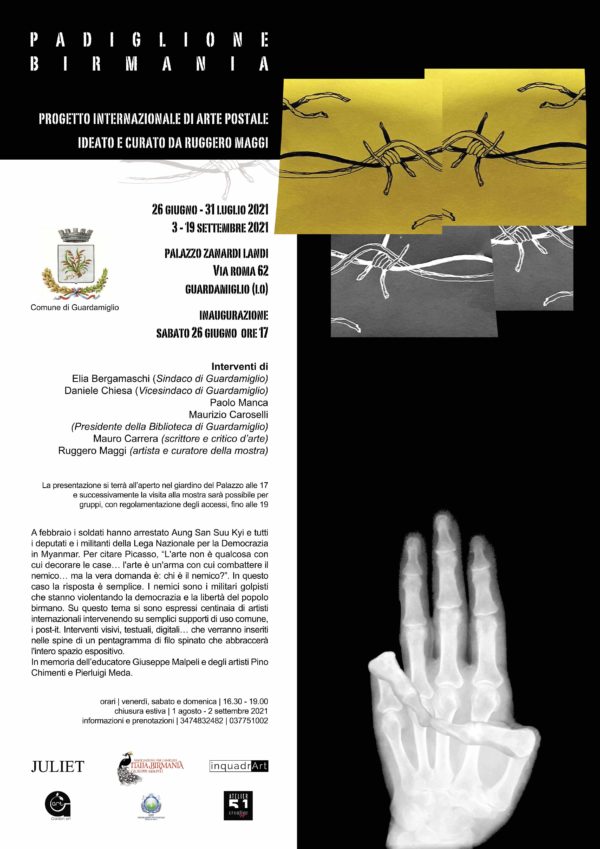





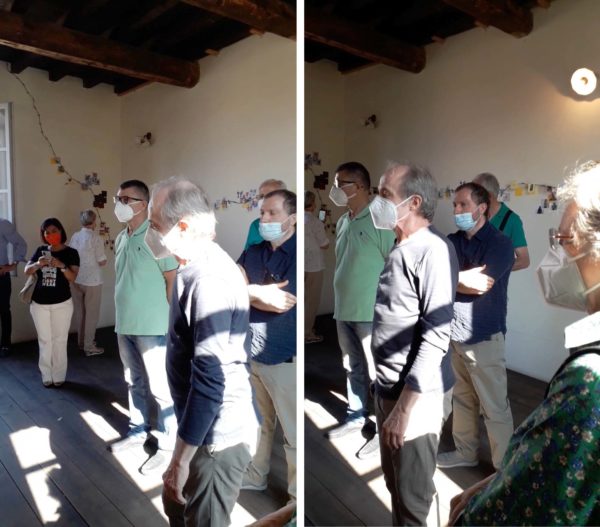
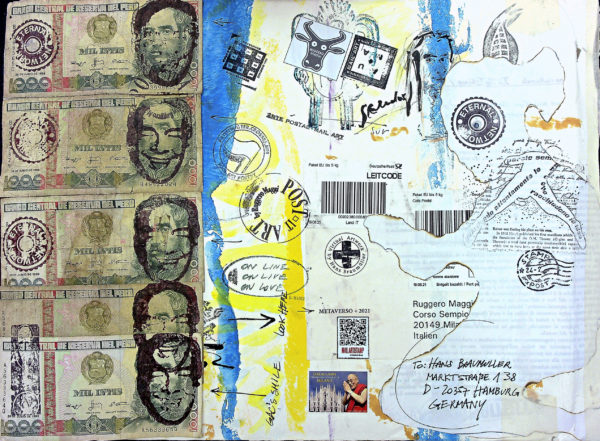
In 2021 Braumüller sent one more work for a retrospective on Maggi‘s Amazonas project. The next mailing to Maggi for Burma Pavilion was against the military coup in Myanmar, 2021.
Peace for Ukraine
When Maggi started in March, 2022 his peace project Ukraine Pavilion in solidarity with the people in Ukraine, Braumüller sent his contribution and helped to distribute the project on the World Wide Web with a new blog about mail art on the German newspaper TAZ at blogs.taz.de/meta and at the networking art site crosses.net.
Meta+Verse
Having a friendly contact, talking very often by email, exchanging mail art, agreeing on the history of mail art, Hans Braumüller and Ruggero Maggi came up with this collaborative project that they are calling Meta+Verse, each intervening in the art of the other, in the typical way of mail art: Add, Alter & Return.
This is how a cycle closes, which began in 1988 with Guillermo Deisler’s UNI/vers(;), and has been going on for more than 30 years. Yes, it is an invisible art of communication! And you can see here the traces left by these two artists, so different, one a painter, the other a conceptualist, but both meeting and making their way in mail art.
Hans Braumüller, Hamburg, 2022
Mail Art send to Ruggero Maggi from Hans Braumüller
Meta+Verse, Cooperative Mail Art Poetry by Ruggero Maggi and Hans Braumüller, 2021-2022
TRUER THAN NATURE
Ruggero Maggi is defined as an outsider and, maybe this best describes how he operates on the margin of the accepted forms. Since the early seventies, Ruggero Maggi has been researching and developing in an apparently eclectic manner but, in fact, wholly supported by an inner logic and by a vision of perfect and total continuity. Ruggero Maggi’s work is closely associated with language.
His individual creations are derived from a research into language based on an elementary and primary dialectic. His language combines “high-tech” elements with primary and elementary materials: the primitive and sophisticated interrelated. Cement, wood, pictures, holograms, neon lamps, paintings, sculptures, installations, performances. Ruggero Maggi’s work is connected with an ethical approach to language. His universe is the world of morality. The basis of his linguistic activity is the world of philosophy of action; although to speak of the artist as a moral being does not mean he is a moralist. Ruggero Maggi’s morality is the morality of human action. His linguistic approach to the artistic world of morality implies a generous vision of Man – perhaps, even speaks of a humanistic approach. Nowadays, to speak of the artist as a humanist in a highly industrial society and through the analytic paradigm of the post-modern condition, is to suggest a quite different meaning from that of scholastic tradition. Ruggero Maggi’s humanism is directly related to the image and measure of his own humanity. It’s not by chance that, from Hiroshima to the Amazon, the artist has coped with the innermost destiny of Man, his role and his function on our planet. Maggi’s work is an everlasting struggle against human injustice. His structural dimension is represented by the truth.
The artist at the beginning of his commitment accepts a fundamental challenge: the revolution of the Truth!
Truth is the fundamental criterion of Maggi’s aesthetics.
Truth substitutes beauty, the concept of beauty of the traditional canons of art. Substituting truth for beauty implies a revolutionary idea of truth, and the artist’s truth certainly is not the product of the inescapable observations of evidence. Maggi’s truth is a system of appearances. If truth is formed by appearances, this true reality cannot be represented. In fact, the whole of Maggi’s work is a display of truth and not a representation. The passage from representation to display of truth informs the rhythm and essential structure of language.
The display of truth in reality is not perceived by Man if the truth is limited to his own being. In order to get aesthetical truth, to get the fundamental criterion of the artistic language, it is necessary to present it as truer than Nature. And it is exactly in this expressive addiction where lies the key for reading Maggi’s art.
To express truth as truer than Nature means to engage oneself to give to human action its intrinsic dynamics of moral motivation. The more truth is perceived as such, the more we are in the universe of an active aesthetics, an operational aesthetics, capable of creating the elements of a harmonic sensibility. Right this sense truth finds its basis in the great question of the moment, in the great challenge to taste and sensibility. We are in a post-industrial society, and therefore in a society which has not gone beyond the industrial stage, but is wholly saturated with machines. In this society it becomes necessary to re-create the relationship between Man and machine, and today this machine is the computer. To re-create this relationship implies the creation of right and true conditions of a dialogue between two types of intelligence: artificial and human. And it’s in the core of this dialogue that Ruggero Maggi’s linguistic research is inserted.
This is the reason why his research is true, and truer than Nature. Without this supplement of soul, truth itself would be no longer credible.
Pierre Restany




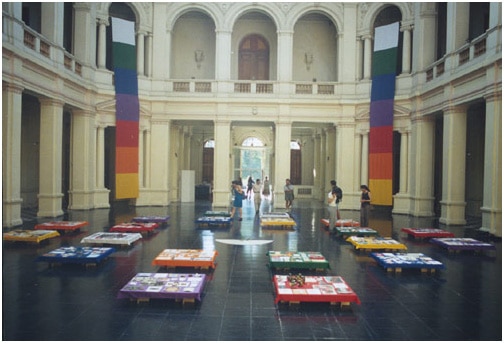

























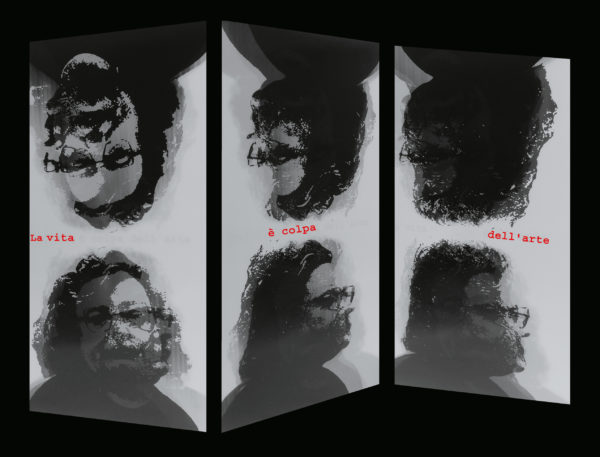


[…] dokumentarische Teil besteht aus Mail-Art-Publikationen wie Meta+Verse von Maggi und Hans Braumüller, Vereint in Mail Art von Braumüller, Maggi, Clemente Padin und Chuck […]